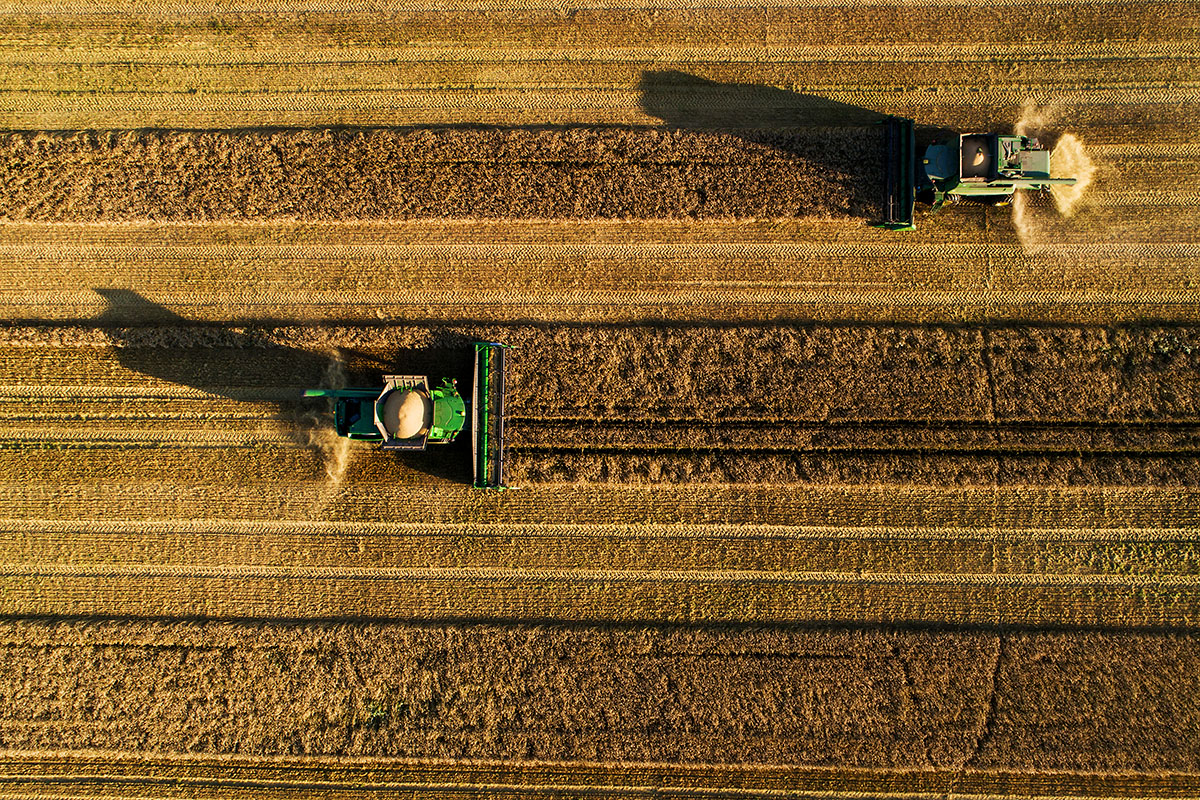Due to intensive farming methods, the world has lost a third of its soil over the last forty years due to erosion

Today’s high-productivity agriculture is intensive and less environmentally friendly than traditional and extensive agriculture. In intensive agriculture, more fertilisers, pesticides, and insecticides are used – arable land plots are usually large and require a lot of fossil fuels to cultivate. Due to the methods used in intensive agriculture, the world has lost a third of its arable land in the last forty years due to erosion [1]. In addition, a large part of the potential arable land is used to feed intensively farmed livestock, either as pastures or to grow feed.
Intensive livestock farming also has a climate change aspect: large amounts of methane (CH4) are emitted into the air by ruminant stomach gases, which has a greenhouse effect 21 times that of CO2. The more people consume meat and dairy products produced using this production method, the greater the impact on the climate. Although it cannot be said that the number of cattle in Estonia exceeds the historical level, the vast majority of dairy cows and practically all pigs are concentrated in large production units, where methane production in manure storage facilities is certainly significant [2]. The methane produced in this way can be captured and used as an energy source.
Intensive agriculture generally has a negative impact on biodiversity – the impact is related to the use of fertilisers and pesticides, as well as the one-sidedness of land use, i.e. large plots of arable land. The toxins used in agriculture have indirect and direct effects that are both immediate and latent. Some pesticides do no harm alone, but in combination with others, they become harmful to living organisms – for example, different plant protection products (insecticides, fungicides) can be more toxic together than when used alone [3].
Fertilisers and pesticides from agriculture are also one of the main polluters of groundwater, surface water, and the coastal sea. If plants are fertilised more than they can immediately bind, rainwater or groundwater will flush the fertilisers into water bodies and groundwater. Fertilisers cause the eutrophication of water bodies and algal blooms and affect the life of species living in water bodies. The toxins that enter the water leave a mark on all living things, because in addition to direct toxicity, there is an indirect effect through the food chain – when a group of organisms (such as insects) that birds feed on is poisoned, the toxin also reaches birds through the food chain. Such effects are far-reaching and long-lasting, and soil biota, pollinators, and top predators are particularly vulnerable to this.
Large plots of arable land make the agricultural landscape homogeneous and destroy the traditional landscape pattern. However, in a homogeneous landscape, there are not as many habitats for different species as in a diverse landscape.
Good agricultural practice has been developed to ensure that intensive agriculture, too, has a lower and more local impact on the environment [4]. It is a generally accepted set of agricultural rules, which consists of environmental requirements set by legislation and recommended guidelines. In addition to the good agricultural practice, stricter rules are being set, for example, on the use of plant protection products, and many toxins declared dangerous are banned or it is planned to ban them [5]. The trend is to use ‘milder’ toxins and to favour ecological control methods (such as natural enemies for ‘biological control’) and to reduce the amount of fertilisers and toxins used by using them more precisely.
It is important to keep or make the landscape more mosaic, as different habitats (hedges, strips of flowering plants at the edges of fields, intermediate strips, open water bodies) help preserve species richness [6].
It is important to keep or make the landscape more mosaic, as different habitats (hedges, strips of flowering plants at the edges of fields, intermediate strips, open water bodies) help preserve species richness [6].
Last modified: 12.01.2022
__________________________________________
[1] http://www.maheklubi.ee/upload/Editor/Mullaviljakuse_pohitoed_fibl_orc.pdf
[2] https://www.kliimamuutused.ee/pohjused-ja-tagajarjed/pohjused/pollumajandus
[4] L. Rooma jt. Hea põllumajandustava. Eesti Põllumajandusministeerium, 2007. https://www.digar.ee/arhiiv/et/raamatud/20085
[5] https://www.pikk.ee/pollumajandusamet-eestis-keelatakse-14-taimekaitsevahendi-muuk/